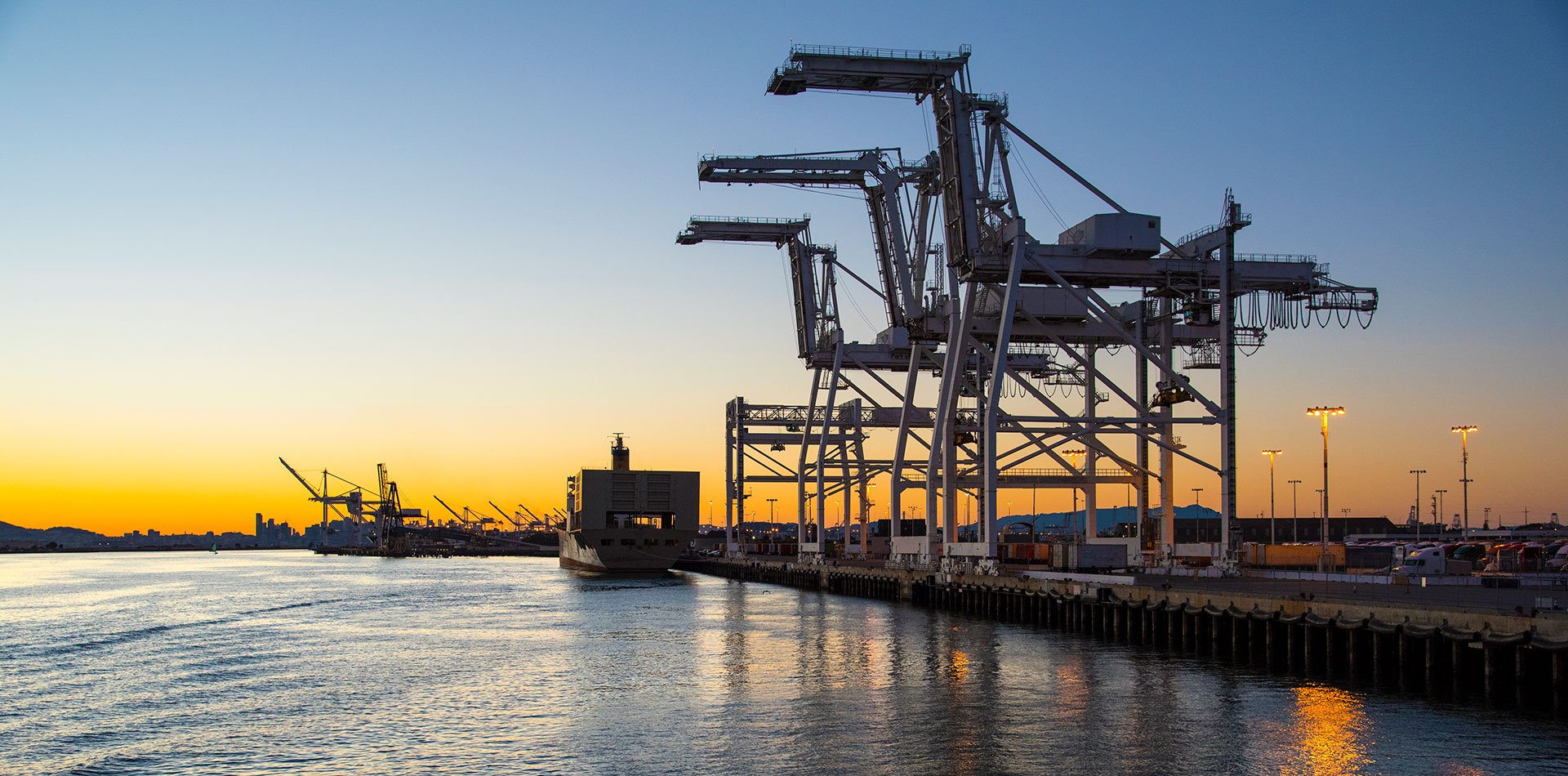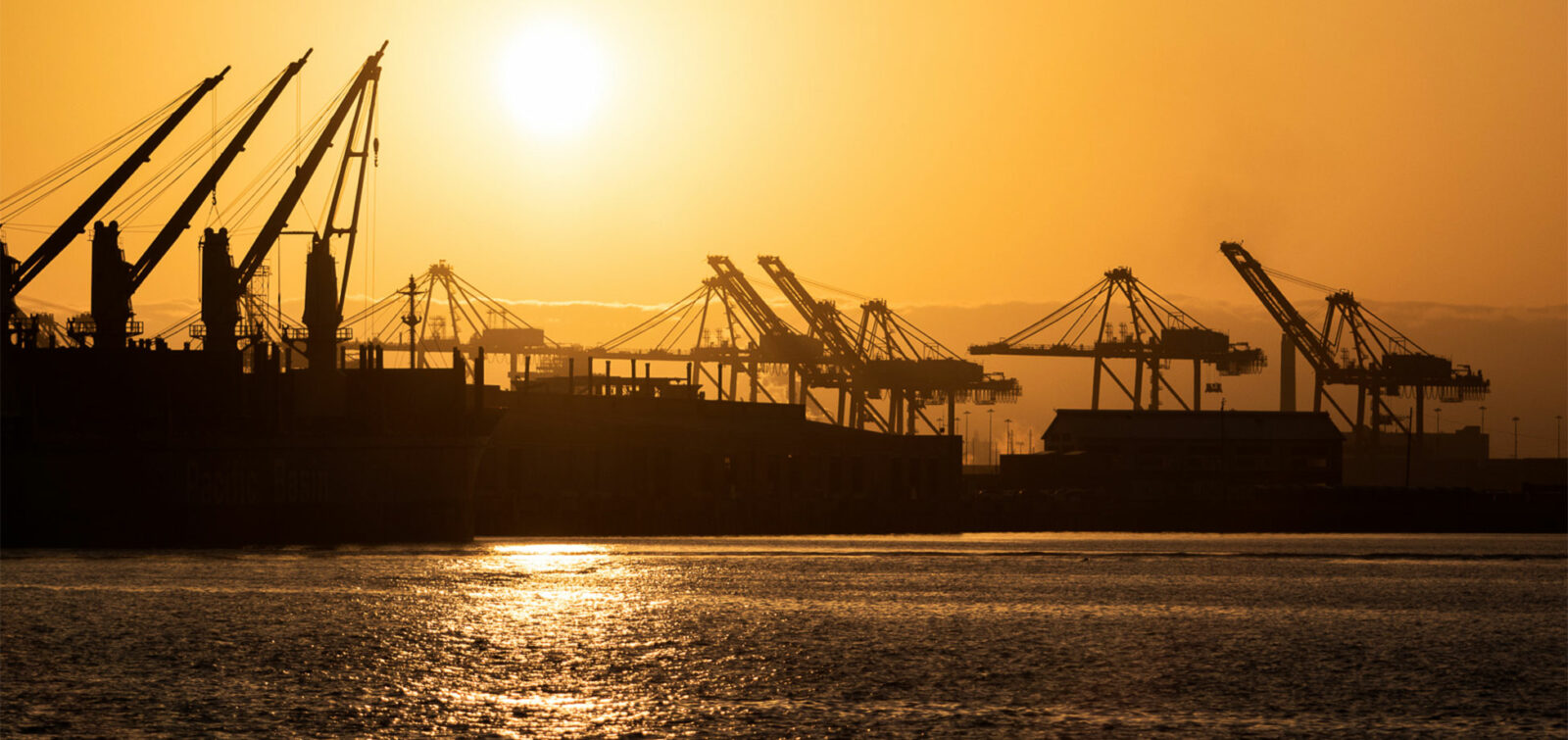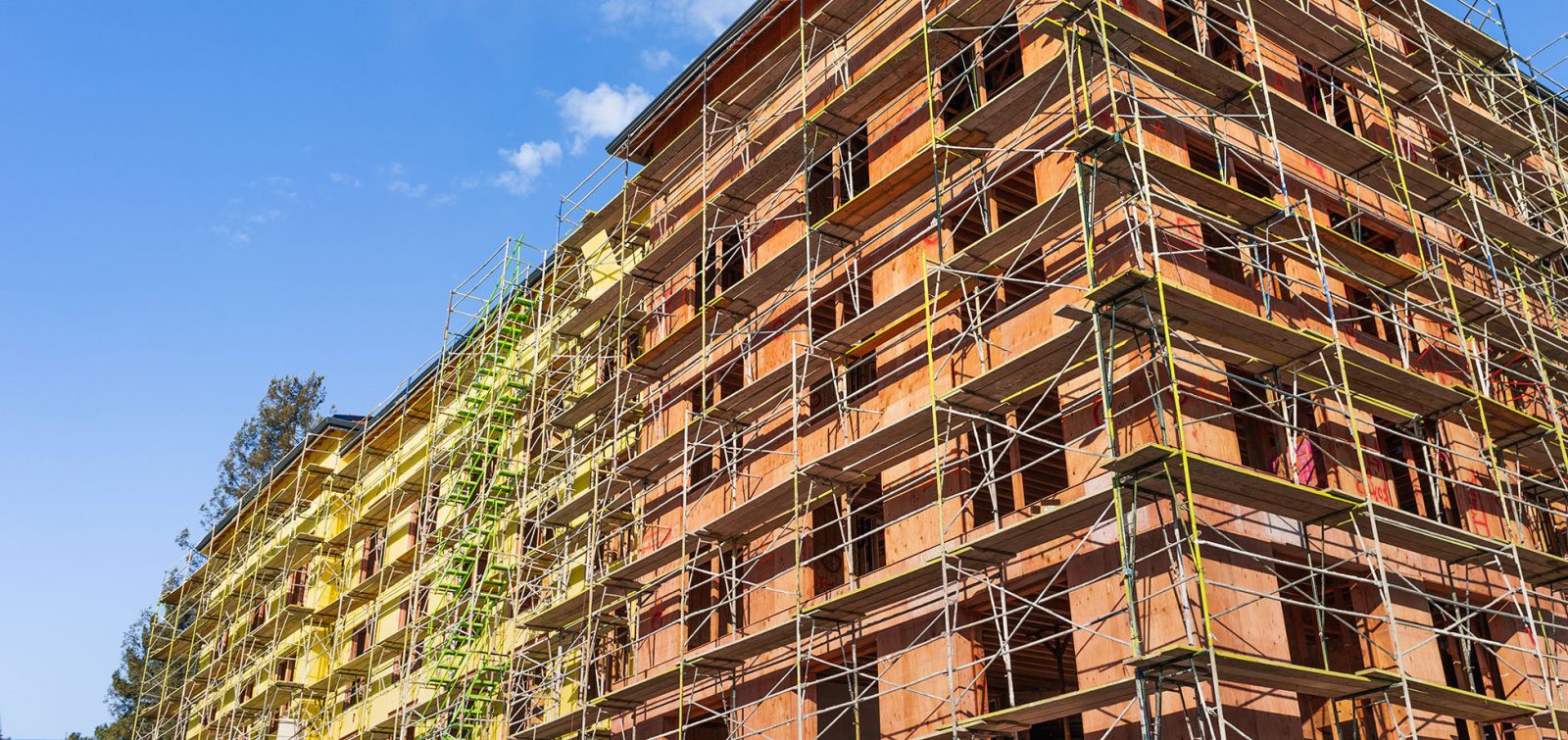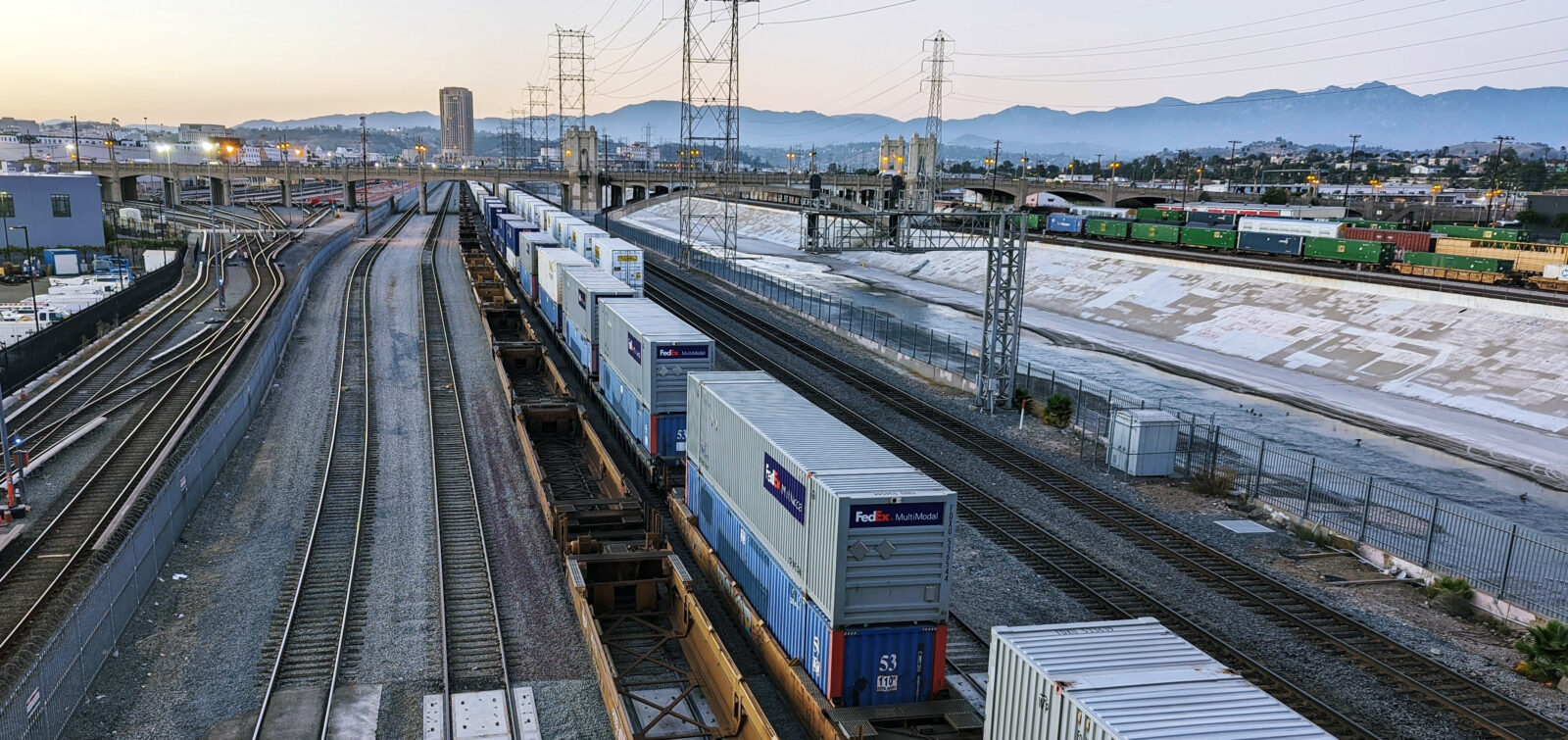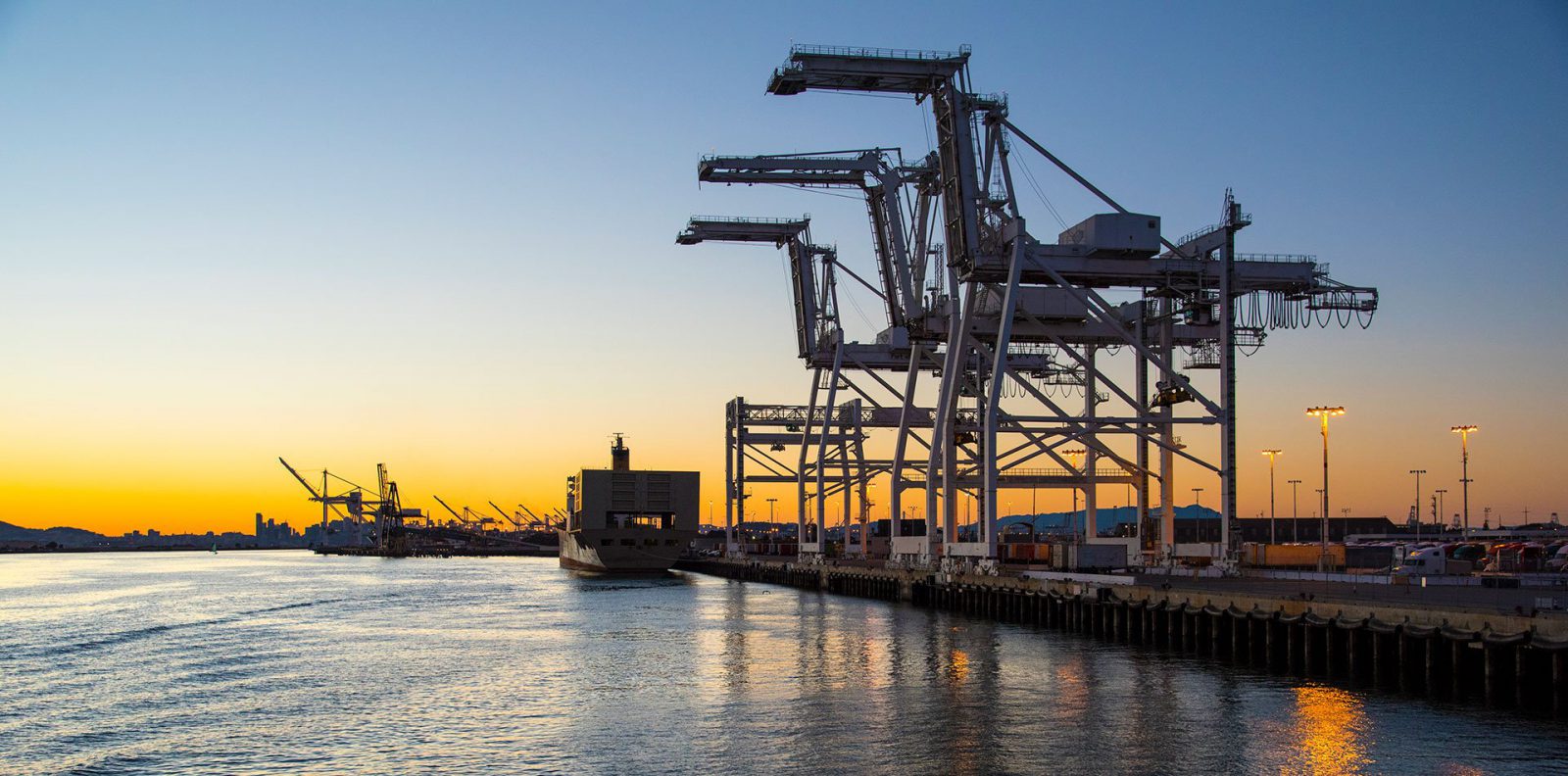An interview with Richard Sinkoff, Director of Environmental Programs and Planning, Port of Oakland, on the value of working with stakeholders to achieve a healthier environment.
At 91 years old, the Port of Oakland (Port) is not slowing down. The Port manages a 1,300-acre seaport, 2,400-acre airport, and 850 acres of commercial real estate holdings, the majority of which consists of open space, habitat areas, and public parks. The Port’s economic impact is significant―supporting 73,000 jobs in Northern California.
This economic activity can affect air quality for one of the Port’s closest neighbors, the community of West Oakland. The California Air Resources Board (CARB) has selected West Oakland to be one of the first participants in its Community Health Protection Program. Launched through the passage of Assembly Bill 617 (AB 617), the Community Health Protection Act is a community-driven approach “to reduce exposure in communities most impacted by air pollution.
ESA’s Chris Easter and Breanna Sewell interviewed Richard Sinkoff, Port of Oakland Director of Environmental Programs and Planning, to find out how the Port engages with its neighbors, addresses air quality concerns, and promotes a healthier environment.
ESA: We see the State of California as leading the way on environmental protection, particularly with Assembly Bill 617 (AB 617). How do you see AB 617 and the Seaport Air Quality Plan?
RS: The foundation of the Port of Oakland’s air quality strategy for the Seaport is the Maritime Air Quality Improvement Plan (MAQIP), which the Oakland Board of Port Commissioners adopted in April 2009. Since then, the Port and its regulatory and business partners have made tremendous progress to reduce diesel particulate matter from seaport activities. The 2017 Seaport Emissions Inventory calculated an 81 percent reduction in diesel particulate matter (DPM) from Port maritime sources—the level that the State of California projected from regulatory compliance. The Port’s goal is an 85 percent reduction in DPM by 2020. This means that reducing DPM emissions an additional 4 percent will depend on identifying additional emissions reduction measures that go “above and beyond” compliance.
Concurrently, the Port is focused on new regulatory and public policy air quality concerns: climate change and local exposure. Reducing localized exposure to toxic air contaminants is the focus of AB 617. Abatement of climate change by reducing greenhouse gas (GHG) emissions is the focus of the State’s Sustainable Freight Action Plan and the governor’s executive orders.
For the Port’s ongoing air quality planning work, we are indeed writing a new chapter with our community and our regulatory and business stakeholders. While maintaining our keen focus on regional ambient air quality, we are also focused on local exposure and GHG emissions. Our air quality planning for the Seaport is synthesizing the existing MAQIP DPM reduction programs with new programs to reduce local exposure and GHG emissions.
ESA: How do you feel about the AB 617 rollout to date by the Bay Area Air Quality Management District (BAAQMD) and CARB?>RS: Well, I think the designation of West Oakland and Richmond as the first communities to do their community-based clean air plan is very exciting. It takes air quality planning to the neighborhood level. By this I mean that we can work to improve ambient air quality and still have, at a local level, “hot spots” and related elevated health risk. So, the fact that the State has selected West Oakland as one of the first communities to do the community-level air action plan is very encouraging.
ESA: Are there any other plans or previous studies, perhaps a master plan, which will help the Port extend those gains and help meet carbon and energy-efficiency side targets?
RS: Our planning approach at the Port is to align ourselves with State policy and the State regulatory process. We collaborate with the State, the BAAQMD, and our local community toward consistent goals. Better outcomes result from alignment on goals. When it comes to master planning, we’re very aware of the governor’s executive orders on GHG reductions, both the 2030 goal and the 2050 goal. In 2030—―which is not that far away…
ESA: It used to seem a long way away, but you’re right. It isn’t.
RS: It’s just around the corner. The governor has established the goal of reducing GHG emissions statewide by 40 percent below the 1990 levels by 2030. The 2050 goal is to reduce GHGs by 80 percent below the 1990 levels. These goals provide a framework for the Port’s air quality planning efforts, particularly because we know that design and implementation of emissions reduction projects can take time.
Right now, the vision for the Port’s new Seaport Air Quality Plan is “The Pathway to Zero Emissions.” The approach is for the Port to establish a planning framework to transition from our carbon-based goods movement to, as much as we can, a zero-emissions “at the tailpipe” operation. We understand that this transformation will require many millions of dollars of investments in equipment and new infrastructure. The Port wishes to align as much as possible with the State’s objectives so that we can—we as the Port and/or our partners—―access available grants and incentives from the State, air quality district, and perhaps from the federal government.
ESA: What are you most excited about in terms of opportunities with State Bill 32 (SB 32) and all the other things that are happening?
RS: I’m very excited about the future. The transition to zero emissions of goods movement is an absolute priority. There’s a lot of dynamism right now in this space because it’s going to rely upon technological innovation. It’s going to rely upon funding innovation. It’s going to rely upon planning innovation. It is going to rely upon external funding and grants.
Whereas past planning and program development were focused on existing equipment, now we’re moving into a new chapter where a lot of the equipment that we’re going to use has not yet come out on the market.We’re in a phase where we’re identifying specific operations and types of equipment that can work within our terminals and we are working with our tenants to get those deployed. In three to four years, we anticipate that another generation of equipment is going to be available. For anyone who’s interested in the nexus between innovation and environmental stewardship, this is a very exciting time.
ESA: We couldn’t agree with you more. We would be remiss if we didn’t ask you: what about challenges?
RS: I think the biggest challenge we’re facing is time, because so many of the environmental issues are so pressing and we all want to get to the outcomes. The Camp Fire, and recent wildfire disasters like it, just brings home in a very dramatic way that this isn’t so theoretical. When air quality is degraded so much from catastrophic California wildfires, you can argue about the source of the problem but you can’t really argue about the impact. I think there’s a desire on everyone’s part—stakeholders, business entities—to move faster. There is, at times, impatience that we haven’t solved the problem. If certain types of equipment in development are not far enough along to be effective or readily available, as customers would want, it might be perceived as a delay.
ESA: What about traffic? As activity increases here at the Port, do you see that becoming a bottleneck in terms of achieving your goals and plans? Has it been historically a challenge for you?
RS: In terms of equipment, the trucks that haul cargoare the largest source category at the Port. Within our secure truck enrollment plan—the Secure Truck Enrollment Program (STEP)—we have close to 9,000 trucks registered. Somewhere between 2,000 and 3,000 trucks on average come to the Port of Oakland each day to move cargo.
No one is denying that truck traffic generated by the Port is a major activity. Truck management has been a part of our operations for decades. It seems, in my experience, that every decade, every chapter, has a different focus. Right now, the focus for Port and City planners is to reduce the impacts of truck circulation in the local neighborhood. According to the 2017 emissions inventory, Port truck emissions are down by 98 percent. This is the result of cleaner engines and fuels and built-in particulate filters—technologies that have created a clean truck fleet.
ESA: The West Oakland community has been very engaged with the Port on air quality. Many organizations have been involved in the process. What are some ways you are engaging with the community to meet the AB 617 requirements?
RS: The AB 617 planning process is community-driven and BAAQMD-led, so the Port is a member of the steering committee and a stakeholder.
For the Oakland Seaport air quality plans—both the MAQIP and the current 2020 and Beyond Plan—we have stakeholder engagement processes. We’re continuing with the same framework of a co-chairs–led process. The West Oakland community sits as one of the co-chairs of the 2020 and Beyond Task Force through representatives from the West Oakland Environmental Indicators Project.
I would say through working together for nearly two decades, West Oakland and the Port have built a very productive working relationship. The West Oakland community is a partner and has been an important resource for community-based science. The tremendous value that the community provides are data from different community-based data collection and data analysis efforts. We’re trying to integrate the findings of these studies into our planning process as much as we possibly can.
West Oakland and the Port form a unique place in the Bay Area. We are neighbors. We have a long history of connection, because West Oakland and the Port evolved together. Some people have this idea that the Port was established in West Oakland, but that’s not how this unique place developed. Historically, the neighborhood grew to serve industries and activities on the Oakland waterfront. There were jobs on the waterfront—some very good-paying jobs related to moving cargo via ships and railroads. People were attracted to West Oakland also because of its proximity to the water and to the ferry and transportation systems.
This is our neighborhood. The challenge is always to sustain the relationship, to keep in touch. We try to make sure that it’s an ongoing relationship and that we’re not just meeting with the community when we have a need or a problem, but that we’re in touch through different forums all the time to promote joint problem-solving.
ESA: We’re interested to hear your vision—as a thought leader here at the Port and regionally—for the next 10 to 20 years for the Port and surrounding community.
RS: I am confident that the Port will continue to take its role as a steward of the environment very seriously. When the Port speaks of the “environment,” we mean both the natural resources—air, water, and land primarily—and the “human environment”—the place where we work, conduct business, go to school, play, and raise families. We’re aware of the ongoing pressures on the Port of Oakland to perform at a very high level. We’ve recently hired a new generation of planners and scientists on our team. When I started my work at the Port of Oakland in the 1990s, some considered environmental compliance to be an ancillary concern that one dealt with after all the important business decisions were made.
The paradigm has shifted so fundamentally that we sometimes forget where we started. Today, our engineers, planners, marketing professionals, leadership, and board members embrace sustainability. They appreciate the importance of integrating the Port’s role as a regional economic driver with a profound commitment to social equity and environmental compliance.
I’m very optimistic when I talk to our newest colleagues. We no longer must always beat the environmental drum and persuade them to look at everything we do through the lens of sustainability. They walk in the door with the inherent knowledge that the Port serves as a steward of the human and natural environment.
Now it’s a matter of maintaining not only a sense of commitment, but of urgency. We’re becoming a mature and more urbanized society and we want to preserve and improve quality of life. The big challenge is how to do that, how to grow in a sustainable way so that future generations can enjoy the same levels of environmental quality that we’ve enjoyed. I’m confident that with so many of us working on this locally to globally, we’ll figure it out.
